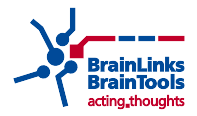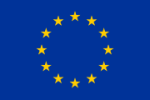AdvancedEDC - Advanced Intracortical Neural Probes with Electronic Depth Control (BrainLinks-BrainTools).
This project proposes to advance the state of the art in highly integrated, electronically switchable intracortical electrode arrays. The concept of electronic depth control (EDC) refined in the exploratory projects mEDC and EDC++ will be pushed here to the limits for the benefit of the SEAM and LiNC visions of BrainLinks–BrainTools. We will continue to take advantage of commercially available 0.18-μm CMOS technology to pack as much intelligence in-situ as possible while keeping the power consumption low, thereby providing critical components for the realization of open- or closed-loop brain-machine interfaces.
Advances beyond the current state of the art are envisaged in several directions, to be tackled by the four involved, closely interacting research groups. First, we will continue to reduce the cross-sectional dimensions of the probe shafts to significantly less than 100 μm and further improve the reconfiguration freedom offered by the probes, while maintaining their in-situ amplification capability and their number of output channels. In parallel stimulation probes with improved charge and reconfiguration capabilities tailored to the experimental needs will be developed. Additional circuit blocks for analog-to-digital conversion of neuronal signals will be designed and interfaced with the probes.
The autonomy of the envisaged systems is ensured by dedicated microelectronic hardware in the form of either a field-programmable gate array (FPGA) or an embedded microcontroller, or a suitable combination of both, tailored for in-situ neuro-computational tasks. These tasks include the energy efficient extraction of relevant spatiotemporal features contained in the signal flow and the computation of optimal actions from the features. The subjacent algorithms are elaborated on the basis of probabilistic modeling and machine learning techniques for the analysis and classification of neuronal signal, for data reduction and information maximization, and for the learning of action policies that are the basis for commands fed back to the recording probes or stimulation patterns conveyed to the brain through the stimulation probes.


















